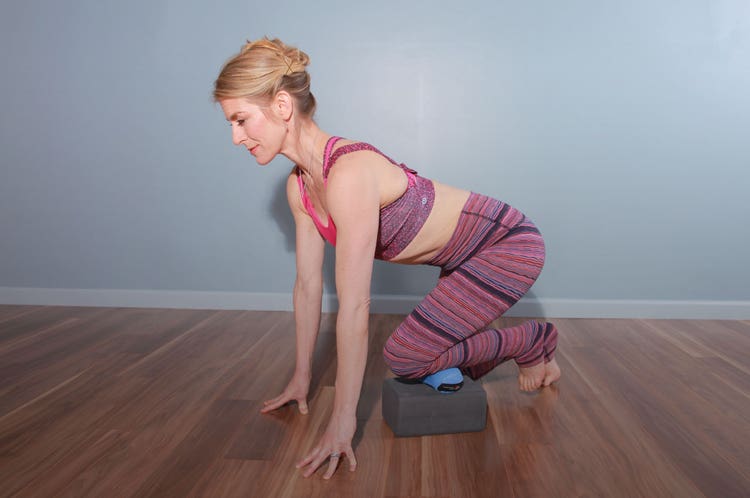Power Up With Self-Care

Sometimes, the going feels hard, and it takes everything you have to muster up the energy to keep moving forward. And when that happens, self care is a resource that we can tap into to fuel our lives — or “up-regulate” our bodies, in addition to familiar down-regulating techniques. Here are two energizing release techniques using therapy balls, and one self-care technique that you can do daily to feel more energy for life, from Jill Miller, self-care expert and the creator of Treat While You Train.
To get started, you’ll need:
- 1 yoga block
- YTU Ball Pair or Plus Pair
Three-Part Breath
https://www.youtube.com/watch?v=BNpWY-8TpcU
No equipment
Perform this technique seated on the floor. Imagine your lungs are filling up like a balloon, as you inhale in three distinct stages before exhaling. When the duration of inhalation is longer than the exhalation phase, it up-regulates and stimulates the nervous system.
- Begin without any air in your lungs, then divide one inhalation into three parts until you are pleasantly “stuffed” with air.
1. Inhale and pause for 2 seconds, then (without exhaling),
2. Inhale more and pause for another 2 seconds, then,
3. Inhale once more without strain and hold your breath for 2 seconds.
- Exhale.
- Repeat the sequence.
Leg 3 Mile Ball Move
https://www.youtube.com/watch?v=3gkLX5OZIYA
Equipment: YTU Ball Pair or Plus Ball Pair on yoga block
This technique is performed while kneeling on the floor. According to Chinese medicine, the acupuncture point called Stomach 36 or “Leg 3 Mile” provides you with a reservoir of stored energy. This technique activates that point, just below your knee at the outside of your shin, and it’s especially effective for those who suffer from shin splints or who often wear high heels.
- Place your shin between a pair of YTU balls on a block or a large book.
- Lean your bodyweight onto the therapy balls and place more pressure on the ball, cradling the outside of your shin.
- Take deep breaths, lean into the therapy balls and slowly scroll up and down along the outside of your shin.
Standing Breath-based Backbend
https://www.youtube.com/watch?v=6Dk1dZsLI5A
No equipment
This backbend is done standing, and the bending is done within your rib cage. Backbends are an energizing whole-body move. They promote better posture and literally take us out of the depression slump. Combining this movement with strategic breathing gives you a double shot at a power surge. Harvard professor Amy Cuddy has done interesting research on the physiological dampening of slumped vs. upright posture.
- Stand with your feet hip-width apart, contract your buttocks and engage your abs.
- Lace your fingers behind your head and take a deep breath, expanding your rib cage.
- As you exhale and feel your lungs deflate, arch back into your slightly slackened rib cage.
- When you’ve gone as far as you can, take in another big breath to billow your lungs, exhale and increase your arch again as the lungs deflate — keeping your abs and buttocks tight throughout the sequence.